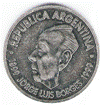Modern Languages and Literatures, Department of

Spanish Language and Literature Papers
Document Type
Article
Date of this Version
1982
Abstract
When La familia de Pascual Duarte irrupted onto the Spanish literary scene in 1942 it created a furore whose effects have still not subsided. Most particularly is this reflected in the stream of critical surmise that continues to surround the work. The bafflement of interpreters, the «frustrating conjecture» 1 to which they are impelled, centers around the evaluation of the protagonist as good or bad, hero or coward, victim or criminal, and also «difficulties» which «concern certain unexplained mysteries in the narrative. 2Among the latter can be noted the seemingly arbitrary killing by Pascual of his dog Chispa, the absence of the protagonist on lengthy travels during which his wife is left exposed to the advances of his rival; the disparity between the modest background of the narrator and the stylistic elegance of his confession; the dedication of the latter to a murder victim of Pascual's whose death is unexplained in the text; and, indeed, the very violence of the character himself. «En realidad,» says Paul Hie, «buscamos en vano un indicio de motivaci6n psicol6gica para la subsiguiente violencia de Pascual. No la hay: sólo sabemos que es literalmente poseido por turbulentos cambios organicos e impelido a matar.» 3


Comments
Published in Roberta Johnson & Paul C. Smith, eds., Studies in Honor of José Rubia Barcia (Lincoln, Nebraska: Society of Spanish and Spanish-American Studies, 1982). Copyright © 1982 Society of Spanish and Spanish-American Studies.